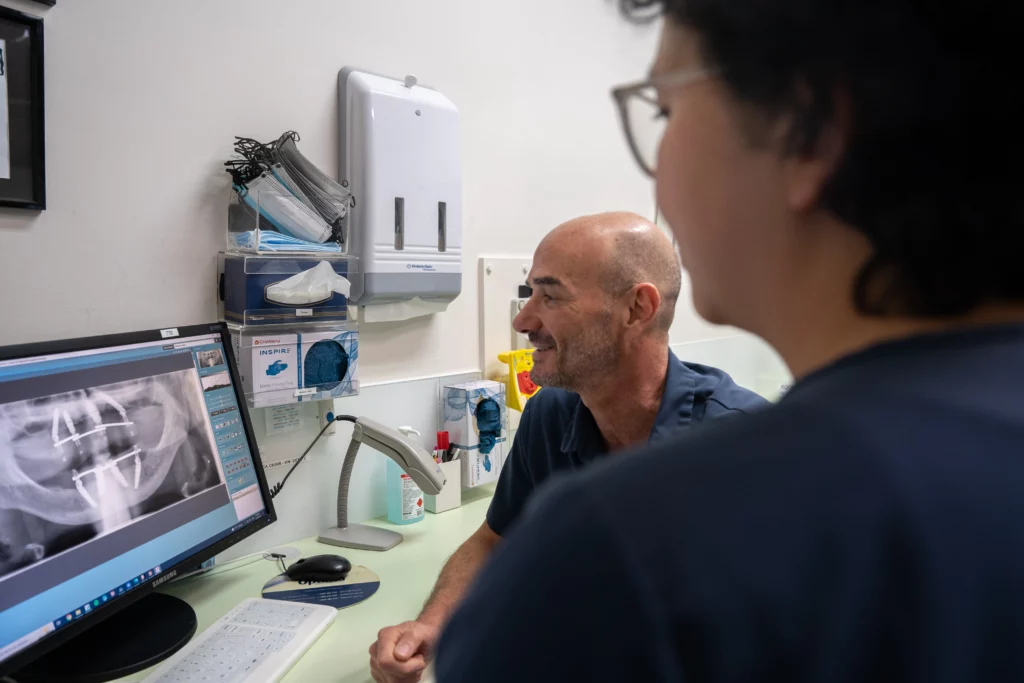Everyone deserves to feel confident with their smile. Unfortunately, too many people struggle with misaligned teeth and bite issues that can cause anxiety. Orthodontic treatment helps improve the alignment of your teeth and hence your smile. Now this can be achieved with the popular treatment of clear aligners. Learn more about clear orthodontic aligners and whether they are appropriate for you.
What are clear aligners?
Clear aligners are devices used in orthodontic treatment to move teeth. A series of aligners that are like super thin transparent mouthguards fit over the teeth and gradually shift their position. Often better recognised by brand names like Invisalign™ and ClearCorrect™, clear aligners are custom designed from thermoplastic material and used to treat mild to moderate teeth malalignment issues. Clear aligners are a popular alternative to braces and fixed orthodontic treatments.
How do aligners work?
Clear aligner treatment involves wearing a series of trays over a period of months, with the aligner trays applying gentle but consistent pressure to prompt teeth movement. Every set of transparent aligners is typically worn for around two weeks before being replaced by another set. Each new set is slightly adjusted to better match the new position of teeth and keep them under constant pressure. Aligners need to be worn every day for a minimum of 20 hours to ensure the treatment can work effectively. Clear aligners should only be removed for short breaks while eating, drinking anything except cold water, brushing teeth and flossing.

What do clear aligners help to correct?
Clear aligner orthodontics can effectively correct mild to moderate issues with the alignment and positioning of teeth. Specific issues that clear aligners can correct include:
- Crowding: The lack of space for all teeth to fit normally. Moving teeth into their proper positions can create more space in the dental arch and alleviate crowding.
- Overbites: When top front teeth extend beyond bottom front teeth. Aligners guide the top front teeth backwards and lower front forwards for a healthier bite.
- Underbites: When lower front teeth protrude in front of upper teeth. Aligners work the opposite way to overbites.
- Gapped Teeth: One or multiple spaces between teeth. Aligners can gently push them closer together for a more uniform appearance.
- Open Bites: When the top and bottom teeth don’t touch each other while the mouth is closed. Aligners guide the arches to the correct positions where they should meet.
Unfortunately, clear aligners are only suited to cases where the dental problem is not overly severe or complex. More severe cases of malalignment and patients with skeletal discrepancies will require other orthodontic treatments, including traditional braces. These can provide a higher degree of correction and control over the movement of teeth, and affect skeletal change.
Are clear aligners better than braces?
There are two main factors at play regarding the difference between aligners and braces: the orthodontic needs of the patient, and their individual preferences. While both can treat misalignment, more severe issues can only effectively be treated by braces. However, clear aligners offer a more discreet appearance than fixed braces and require fewer lifestyle changes due to their removability. If your issue is mild to moderate crowding or poor alignment, the lifestyle benefits of aligners may be more compelling.
Who can get clear aligner treatment?
Clear aligner treatment is safe for most teens, adults and even some of our older patients. However, there are a number of important factors for you and the dentist to consider before committing to the treatment. Patients must be able to commit to wearing the aligners for 20 hours a day, as well as cleaning their teeth every time before their aligners go back in. Additionally, patients should have healthy teeth and gums before starting treatment. Existing problems like gum disease or cavities MUST be addressed before orthodontic treatment can commence.
Treatment process
The procedure begins with a detailed evaluation of the patient’s oral health and the position of their teeth. This helps to identify whether clear aligners would be suited to fixing their dental issues. If so, the dentist then takes digital impressions of the teeth using 3D scanning technology. These scans are used to create detailed models of the teeth and plan the step-by-step movements.
Based on this plan, each patient’s aligners are fabricated to fit their teeth comfortably but with enough pressure to encourage tooth movement. Each set of aligners is worn for around two weeks before being replaced, to ensure the teeth remain under pressure. Each patient visits the dentist periodically to assess the movement of their teeth and identify whether any adjustments are necessary. A full aligner treatment course can take as little as 4-5 months, but on average, 12-16 months are needed. The length depends on the complexity of the case and patient compliance with wearing the aligners.
Do clear aligners hurt?
It is normal to experience some minor pressure about the teeth for the first few days whenever new aligner trays are delivered. This is because your teeth again have to adjust to the new set, but the discomfort generally passes relatively quickly, indicating that your teeth are moving as expected. If the pain is severe or does not go away, you should visit your dentist so they can evaluate what may be wrong.

Aftercare
Unfortunately, without some retentive measures, teeth can move back to their original positions prior to the treatment. After finishing with clear aligners, patients must wear a ‘retainer aligner’ to maintain the new position and alignment of their teeth. To begin, retainers may need to be worn full-time, but often patients can transition to night-time use only.
Looking after the health of your teeth is another key component of aftercare. While patients may not need to brush quite as often as when wearing aligners, they should still be brushing at least twice a day and flossing daily. Patients should also continue to attend all follow-up appointments that the dentist instructs them to, as well as their regular six-monthly check up and maintenance appointments.
How much are clear aligners?
The clear aligners cost is similar to that of traditional metal braces, but it can depend on the length of your treatment plan and how complex or mild your case is. In most cases, a treatment plan will cost as little as 3 – 4 thousand dollars. You can always book a consultation with our team and they can provide a full breakdown of our treatment cost for your individual case, and the payment plan options available.
Are clear aligners effective?
Like any orthodontic treatment, clear aligners have a range of unique benefits as well as some drawbacks that need to be considered as well.
Advantages
- Appearance: The discreet, near-invisible look of clear aligners means patients can receive the benefits of comfortable teeth straightening without fear of how the orthodontics will look. This is particularly important for adults who may resist getting braces because of anxiety over how they will look.
- Removability: Clear aligners can be removed for teeth cleaning, meaning patients can continue their regular brushing and flossing with ease. Additionally, there are no dietary restrictions like there are with fixed orthodontics.
- Results: Each series of aligners is based on a precise treatment plan created from scans of the patient’s unique set of teeth. This makes the results predictable and controlled, while the transparency of the trays also means patients can better see their results as they happen.
Disadvantages
- Limited Effectiveness: While able to work for many orthodontic problems, clear aligners are not suitable for complex and severe cases of misalignment, with only fixed braces capable of providing the required control over tooth movement.
- Compliance: Patients need to be comfortable wearing the aligners for at least 22 hours a day, and cleaning their teeth and aligner trays very often to ensure they remain free from debris and food particles. Failure to follow these expectations can prolong treatment or prevent it from being fully effective.
Fix crooked teeth at CDIC
Having provided tailored dental solutions to patients for over 30 years, CDIC is one of the safest places to receive clear aligner therapy and enjoy a positive change to your smile. Book an appointment or get in touch with us today to give your teeth the care and treatment excellence they deserve.



